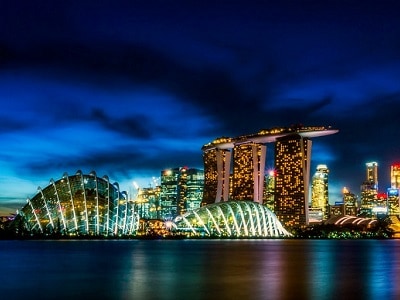Energy is Singapore’s Next Big Challenge to Overcome at the Next 50 Years
 Singapore is no stranger to overcoming adversity. The past 50 years has seen the country triumphantly overcoming its water shortage, while the next 50 years is going to be about a new challenge entirely – how it overcomes the energy challenges. The main goal is to ensure that Singapore will never be dependent on just a single source of energy, just like how the country has successfully done so for its water scarcity problem by diversifying the water supply over the years.
Singapore is no stranger to overcoming adversity. The past 50 years has seen the country triumphantly overcoming its water shortage, while the next 50 years is going to be about a new challenge entirely – how it overcomes the energy challenges. The main goal is to ensure that Singapore will never be dependent on just a single source of energy, just like how the country has successfully done so for its water scarcity problem by diversifying the water supply over the years.
The next aim for the country is to enhance energy resilience and ensure that the country will never rely on just one course for its supply. This statement was reinforced by the Minister of Trade and Industry during the opening of the Singapore International Energy Week at Marina Bay Sands. To meet this goal, Singapore is investing in infrastructure and tapping into the green energy sector, acting as a test bed for innovative solutions both locally and abroad.
A Better Utilization of Solar Production
New projects and initiatives are in the works, ranging from ramped-up solar production to greater support for the energy storage systems. Essentially focusing on giant rechargeable batteries, this will enable Singapore to better utilize solar production. Energy storage systems are crucial for Singapore’s success if it wants to harness renewable energy, and the Energy Market Authority (EMA) is driving this development to meet that goal. This is because solar power is one of the most promising renewable resources for the country. However, there is one major drawback – the unpredictable sunshine due to cloud cover.
Singapore hopes that by 2025, solar power will be supporting about a quarter of national projected peak electricity demand. Currently, solar energy is accountable for about 2% of the country’s power supply. The EMA announced that it will partner with PSA Corporation and Sembcorp Industries to roll out energy storage systems on a more commercial scale.
The EMA also confirmed that it will continuously evolve as the local energy storage system landscape continues to develop, stating this in a policy paper which was launched. $17.8 million in grants were announced at the 2017 energy week which will be diverted into testing what storage solutions will work best in the country’s hot and humid environment.
JTC’s SolarRoof Programme
JTC is also leading the push for solar energy, and it will expand its solar generation capacity by 100 times through its SolarLand and SolarRoof initiatives. Currently, JTC’s SolarRoof programme enables power to be pumped into the national grid from solar panels on the rooftops of the agency’s buildings. Consumers are able to purchase this electricity, even if the buildings they live in are not equipped with solar panels. SolarLand on the other hand helps install solar panels on vacant land as an interim use.
No doubt about it, overcoming the energy challenge will be the focus goal for the next 50 years. Consumers, companies and countries all stand to gain from the transformation that the energy sector is undergoing, thanks to the deployment of new technologies. Better production, management and consumption of energy will ensure Singaporeans continue to enjoy a high quality of life, a vibrant economy and greater access to cleaner, more affordable and reliable energy.








